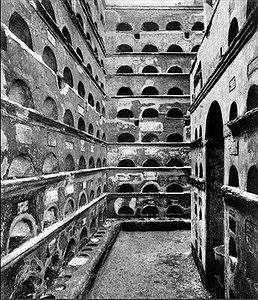
Fusing ancient, medieval, renascent and modern influences, the city of Rome is truly relic of time. It’s actually so old, that many construction projects in Rome have to go through a tiresome process before they can even start work, since there’s always the chance some forgotten tomb or catacomb of some sort might lie underneath. If you’re wondering what are the chances of finding a new catacomb, well consider if a stray cat found one, then there’s yet a hefty amount to be unearthed.
The stray cat, suddenly turned Indiana Jones, entered a a grotto near a tufa rock cliff in a residential area of the city. Mirko Curti, a resident of the respective neighborhood, was startled by the cat’s meowing and decided to investigate. He found the cat, after entering through a small opening of the cave, which was guarded by rocks until earlier that week, but which fell away after heavy rainstorms. Besides the cat, though, Curti also found ancient human bones. The archaeologists believe that the bones likely fell into the cave from a chamber higher up in the cliff.
Upon alerting the authorities, archaeologists estimated that the catacomb likely dated back to sometime between the 1st century BC and the 2nd century AD. In Rome, there are hundreds of kilometers of catacombs running beneath the city and its outskirts. Some have been refurbished a bit and opened to tourists, while most have been reinforced and kept off limits in order to prevent landfalls or other accidents. Archaeologists believe there are still more sections left for discovery beneath Rome – signore Curti and the stray-cay found one such catacomb.
“The Jewish community in Rome built them as cemeteries. Christian catacombs came a century later. They were not secret meeting places to survive persecutions, as historians thought in the past, but burial tunnels, like the Jewish ones,” Mr. Morabito adds. “They used to grow larger and larger around the tombs of saints because people asked to be buried near their religious leaders.”






